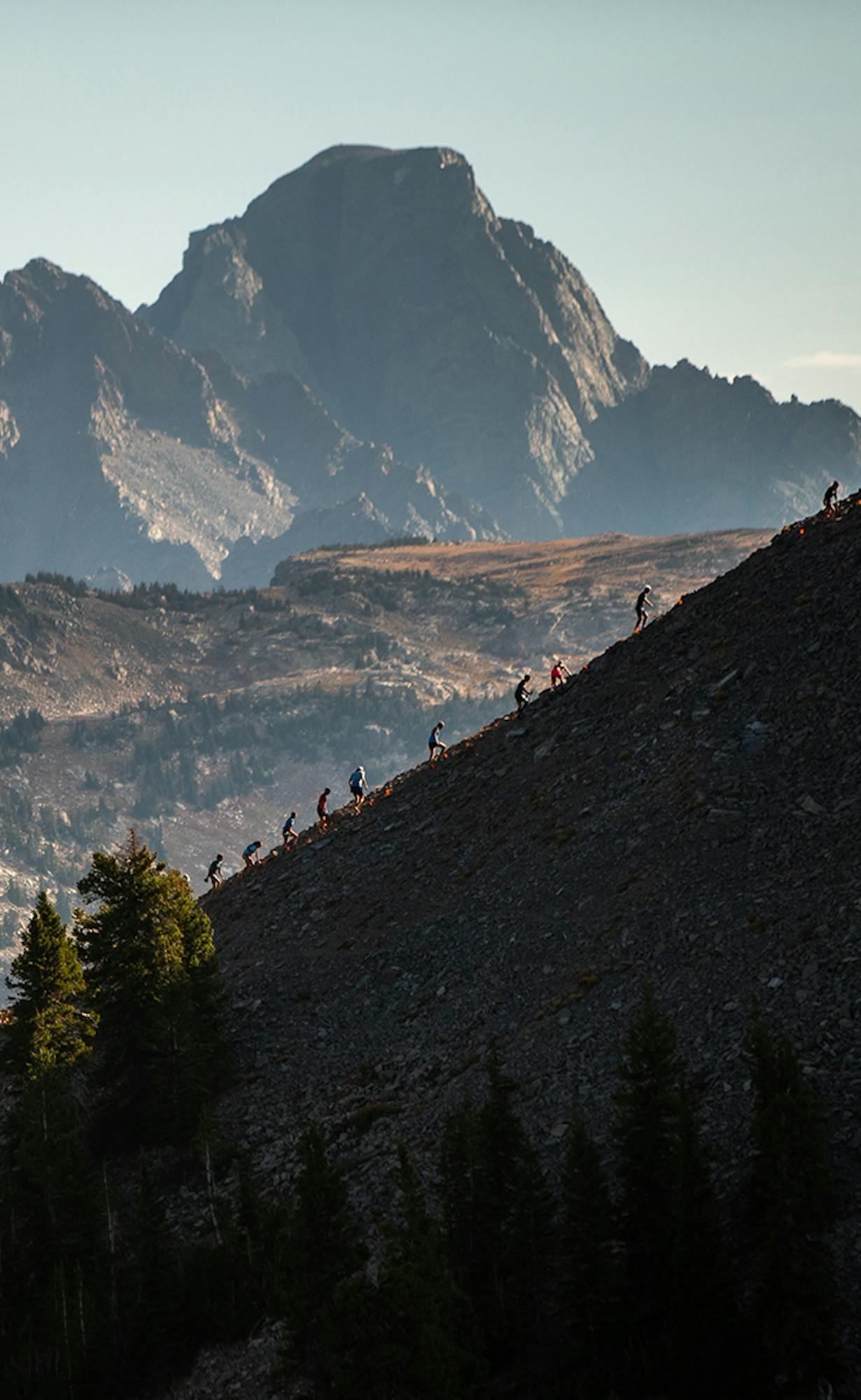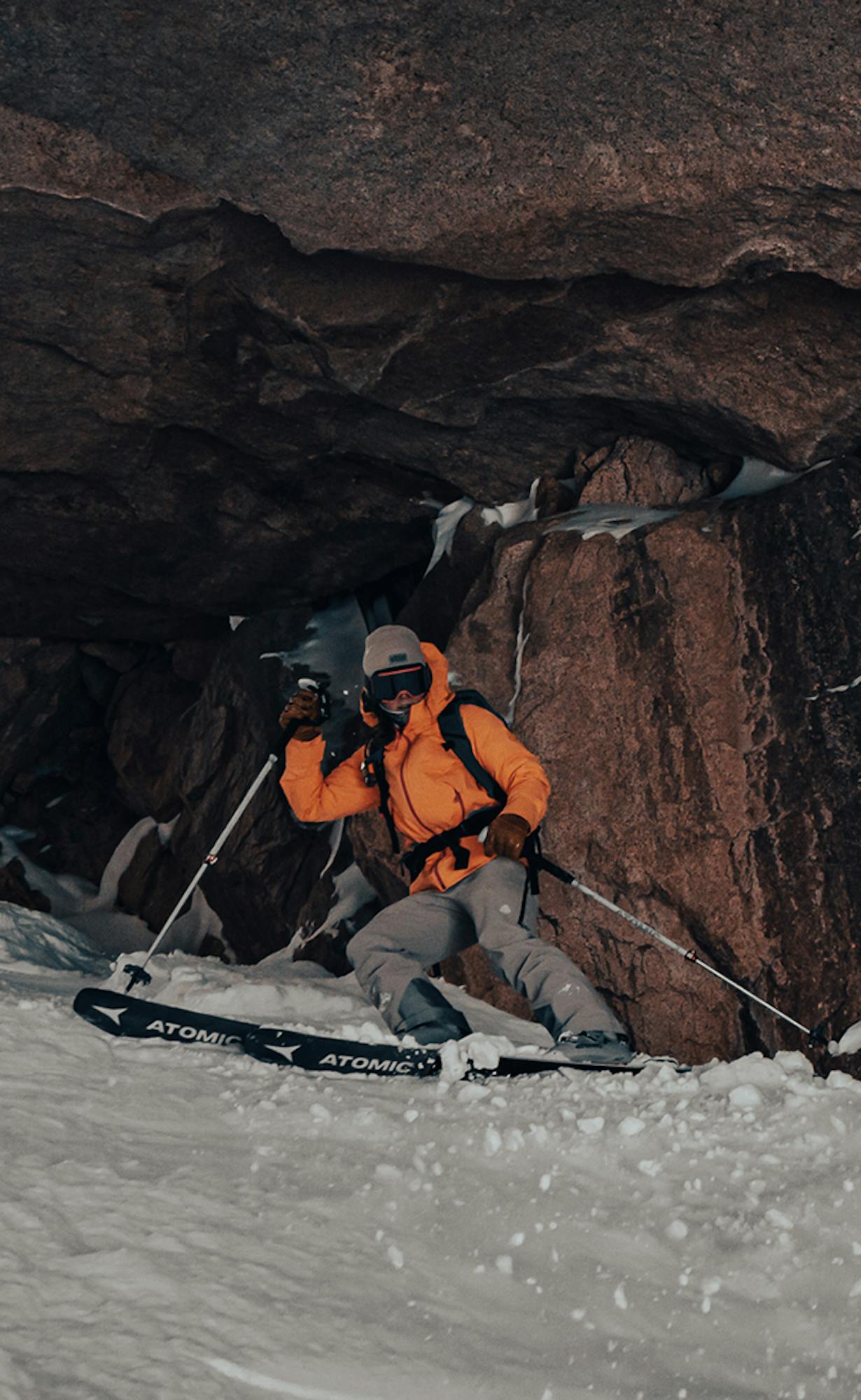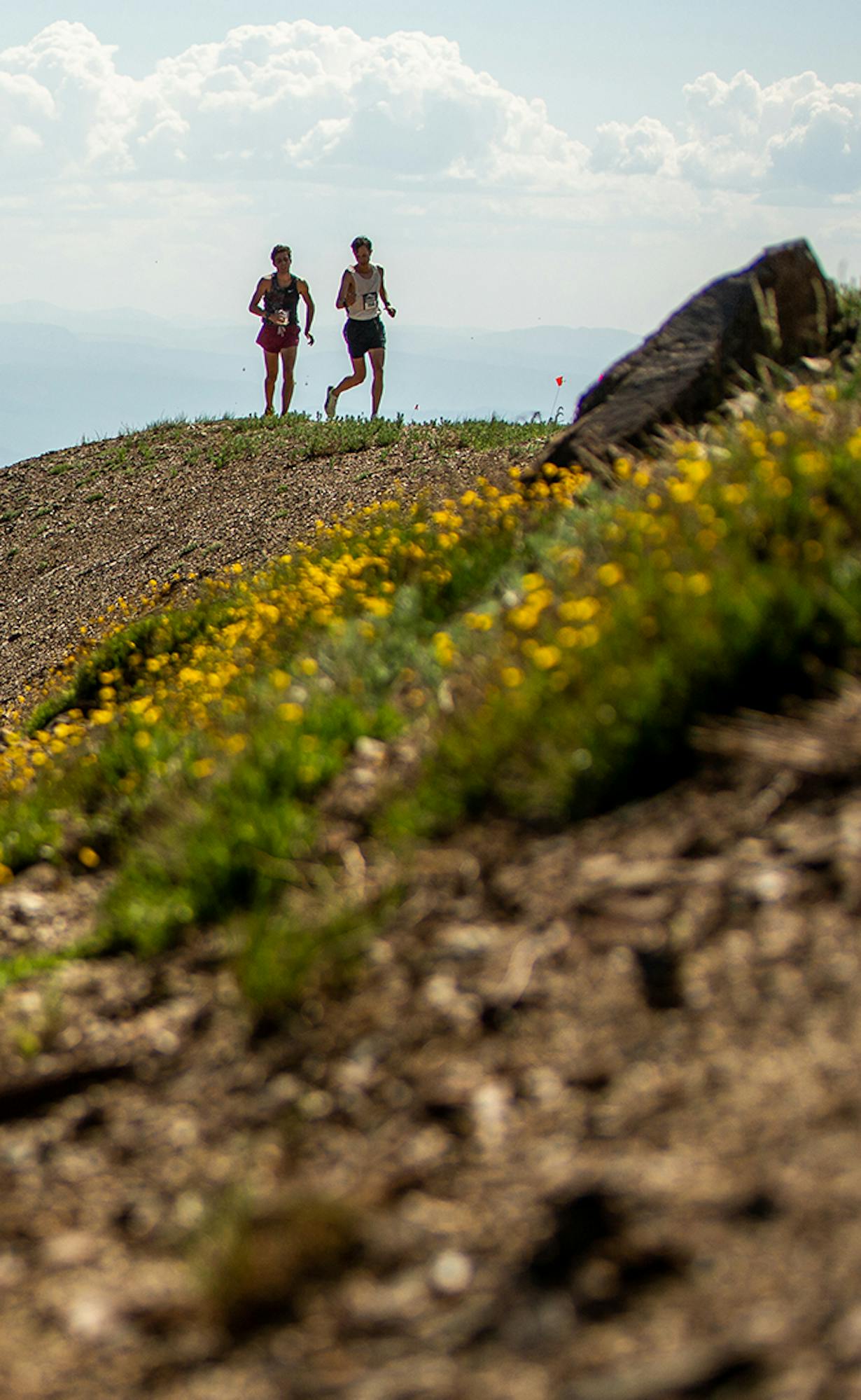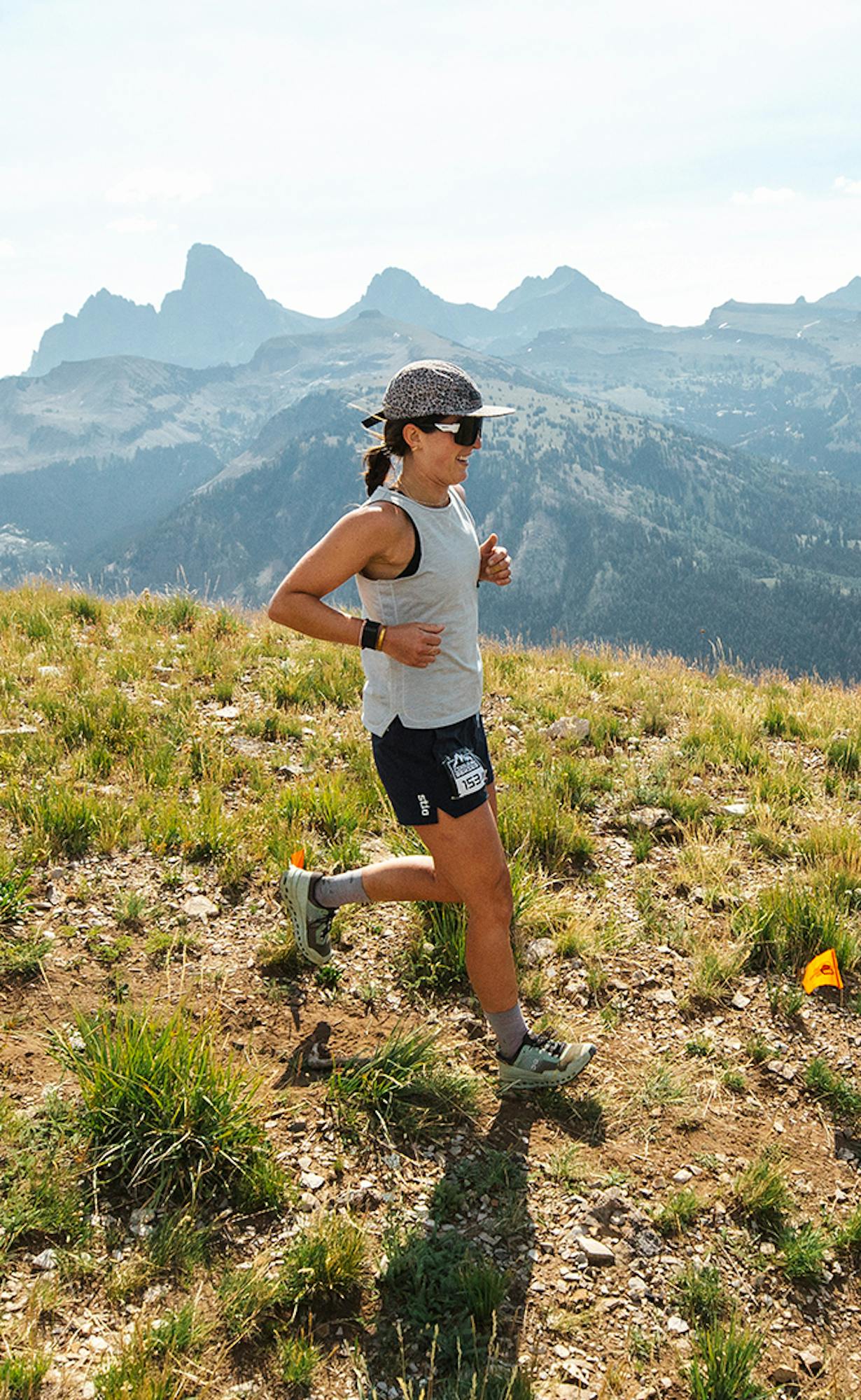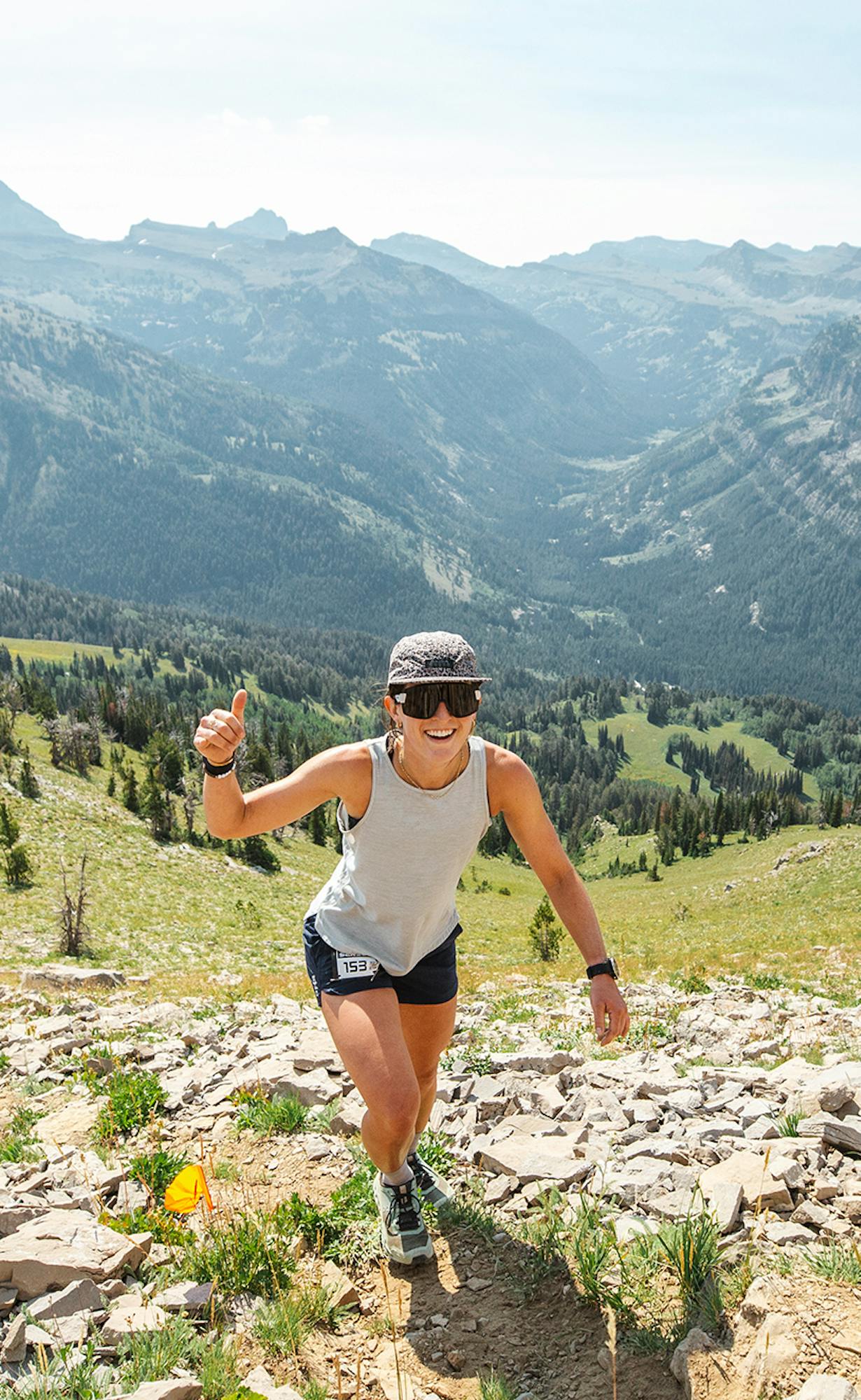Back On Top
Words by Lisa Jhung, Photos by Rocko Menzyk | 7 Min Read
When a life-threatening health scare takes away her ability to push herself on bike and skis, alpine athlete Nicole Jorgenson discovers trail running and gains a new perspective of life’s peaks and valleys.
Photo by Rocko Menyzk
She had a different kind of mountain to climb, one she never could have predicted or prepared for.
Ski patroller, mountain biker, and ski mountaineer Nicole Jorgenson crested the 9,920-foot highpoint of the 6.9-mile Cirque Series mountain running race at Grand Targhee Resort in Wyoming with a smile on her face. “I felt really happy to be out there pushing myself, testing my body and knowing everything was going to be fine.”
Six months prior, the 31-year-old living in Sun Valley, Idaho, had the scare of her life.
Over the course of nine days in February of 2022, she’d had a headache which she attributed to dehydration and work stress. “I took ibuprofen and kind of ignored it,” says Nicole. On Saturday, February 12, 2022, she was having dinner at a friend’s house to help celebrate a birthday when her left cheek started feeling tingly. “I went to the bathroom to try to recompose myself,” she recounts. “I was staggering to the left as if I was drunk, but I’d only had half a margarita.” She had to hold onto the sink to keep from falling.
“I told my boyfriend what was going on, and we went outside for some fresh air. He saw I couldn’t stand up by myself. I was slumping to the left, and realized my left arm was tingly and weak,” she says.
She became increasingly dizzy, which led to nausea and throwing up. “I knew something wasn’t right.” A trained EMT, Nicole knew to go to the ER.
A CT scan showed a dissection in the inner lining of the vertebral artery on the left side of her body. “That artery leads to your brain,” she explains.
Doctors in Sun Valley wanted more imaging—an MRI—but the weekend timing meant that necessitated a 2.5-hour, bumpy ambulance ride to larger medical facilities in Boise. The next night, a doctor delivered her diagnosis: This young, healthy 30-year-old had suffered a series of small strokes to her brain stem.
“I was shocked,” says Nicole, “but I just kind of accepted it and trusted I was going to get better.” Still, it was the first big injury in her very active life that forced her to stop everything—from skiing and patrolling to driving and walking.
For the weeks that followed, Nicole met with physical therapists, occupational therapists, and a neuropsychologist, both from an inpatient rehab facility where she stayed for five days once released from the ER and from her parents’ house in Boise. She was diligent about her therapy, which she chalks up to having always been a competitive person. “I was really excited when I could start doing things to challenge my brain and get back to normal.”
Within a couple of months, she felt like she could get back on her mountain bike and ride like her old self. But the doctors had put her on blood thinners which meant she wasn’t allowed to do any activities that could cause her to fall, cut herself, and bleed, which would prevent the artery from healing. A bleed would have also been life-threatening.
But as the door to mountain biking had closed—albeit temporarily—another door opened.
One of the only activities she was “allowed” to do was run. And though she says she disliked running before her brain injury, being on two feet—first alternating five minutes of running with five minutes of walking—started feeling good. “I don’t know if it’s because running was the only way I was allowed to push my body, but I really started to really appreciate it,” she says.
Her two-year-old Blue Heeler, Diesel, appreciated it, too, as he became her running companion. “All the activity I was allowed to do [while on blood thinners] involved him,” says Nicole. “He doesn’t come mountain biking with me. But running…He’s been happy. He gets to go all the time.”
Last summer, after six months on blood thinners, Nicole was cleared to resume all activity: mountain biking, ski mountaineering, rugged trail runs to mountain lakes where she—and Diesel—jump in for a swim before returning to the trailhead or home base.
Her regained fitness, new love of trail running, and desire to push her body in a way she’d known in mountain biking and ski mountaineering spurred the idea to sign up for the race at Targhee.
Cirque Series races range from 6.2 to 8.8-miles in length, with thousands of feet of vertical gain. They scale the peaks of ski resorts, sometimes include rocky scrambles to summits, and follow singletrack or fire road descents back down. “I didn’t see a reason not to do it,” she says. “I also wanted a renewed sense of my body being able to do something like that.”
Getting to the top of that first climb up the face of Targhee—a 2,000-foot push in under 2.5 miles—was monumental.
“I knew it was going to be a challenge, but my goal was to keep a steady pace of pushing myself,” she says. “I looked over at the Tetons during a scrambly section on the way up and it was super beautiful. But reaching the top—that was the first time I’d been on top of a mountain since my stroke. It was powerful. I felt at peace.”
Nicole is looking forward to more Cirque Series races and is planning some alpine linkups in the Sawtooth Wilderness and White Cloud Mountains on foot that she says she wouldn’t have thought to do before her injury.
“I’m glad I found running,” she says. “Running kind of opens up a world of things you can do in the summer that you wouldn’t do on a bike. It opens up new adventures.”
Now that Nicole’s on the other side of the figurative mountain of having a series of strokes, she’s reflective. “I’ve gone through a lot of mental process,” she says. “Having my physical body taken away from me—something I’ve always been really in tune with and pushed myself—and being forced to rely on my emotional self and allow that part of me to develop while there was nothing I could do to make myself heal better than rest…I have no doubt that will make me stronger in the long run.”
Top Stories
Check Out All the Top Stories
Follow us @stio
See how people are living the mountain life everyday in our gear.



